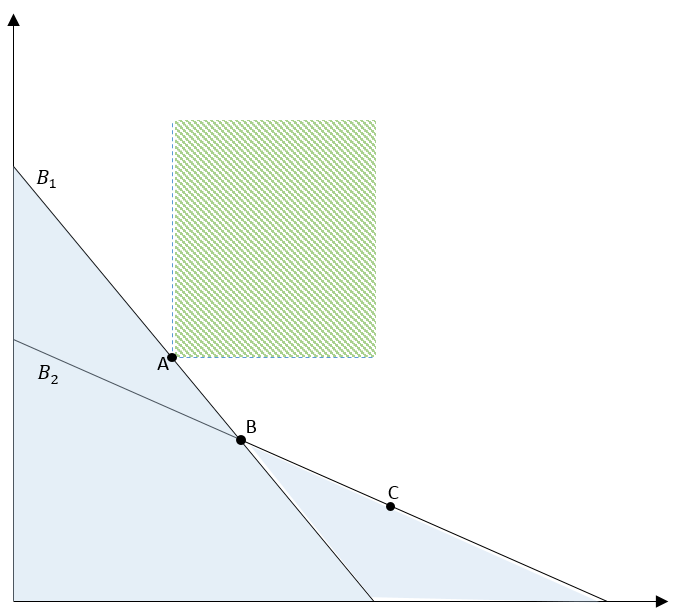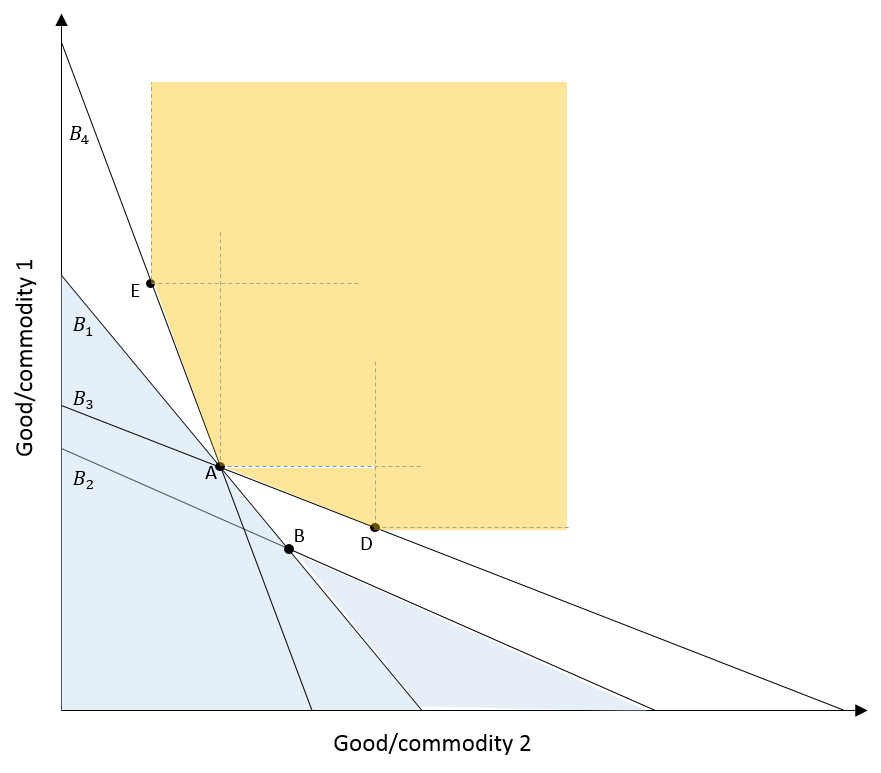Revealed preference provides an alternative viewpoint to consumer preferences as compared to cardinal or ordinal utility analysis.
Ordinal utility analysis vs Revealed Preference
The ordinal utility analysis explains consumer choice based on indifference curves and budget constraints. That is, consumers’ choice of any combination of goods is determined by their preference (from indifference curves) and budget (from the budget line).
The theory of revealed preference reverses this phenomenon. It states that preferences are determined by a consumer’s choice of a combination of goods. In other words, preferences are revealed from the choices made by consumers.
Therefore, ordinal utility analysis determines consumer choice through preferences. Whereas revealed preference theory determines preferences through consumer choice.
Econometrics Tutorials with Certificates
Theory
If a consumer chooses a combination of goods over other available combinations, it can be said that the consumer prefers that combination over others. Hence, consumers reveal their preferences in their choice of goods.

The diagram illustrates the basic idea of revealed preference. Lines B1 and B2 are budget lines showing various combinations of two goods or bundles that a consumer can purchase. If the consumer chooses combination ‘A’, then, he or she prefers combination ‘A’ over combination ‘B’ as they are on the same budget line (B1).
Suppose, the relative prices of goods change and the budget line shifts to B2. If the consumer purchases combination ‘B’ at this new budget line, we can conclude that combination ‘B’ is preferred over ‘C’. Hence, combination ‘A’ will also be preferred over ‘C’. This happens because of the transitivity of preferences as the consumer chose ‘A’ over ‘B’.
Therefore, the consumer prefers ‘A’ over all the combinations available. These are shown by the shaded region (in blue) below both the budget lines. The combinations which lie in the shaded region above ‘A’ (in green) will be preferred over ‘A’. These combinations provide higher utility to the consumer As a result, the indifference curve of the consumer passes through point A and must lie in the unshaded region.
Extension: several budget lines and choices to determine preferences
The above analysis can be extended further with multiple budget lines and consumer choices. We already know that ‘A’ is preferred over ‘B’ because the consumer chose ‘A’. With changes in relative prices of goods, the budget line shifts again to budget line B3. If the consumer chooses the combination ‘D’ here, we know that he or she prefers ‘D’ over ‘A’. Similarly, if the consumer chooses ‘E’ on the budget line B4, then, the consumer prefers ‘E’ over ‘A’.

Therefore, the shaded region above ‘A’ shows all the combinations that will be preferred by the consumer over ‘A’. This is true because both ‘E’ and ‘D’ are chosen by the consumer. Hence, all points above line AE and AD will be preferred over ‘A’ (in orange) as the indifference curve associated with ‘A’ has to be convex and fall below points ‘E’ and ‘D’.
We also know that ‘A’ is preferred over all the combinations in the shaded region below budget lines B1 and B2 (in blue). The indifference curve associated with ‘A’, therefore, will lie in the unshaded region. Similarly, this analysis can still be extended by including more consumer choices and budget lines to further reveal the preferences of the consumer.
Econometrics Tutorials with Certificates
This website contains affiliate links. When you make a purchase through these links, we may earn a commission at no additional cost to you.


